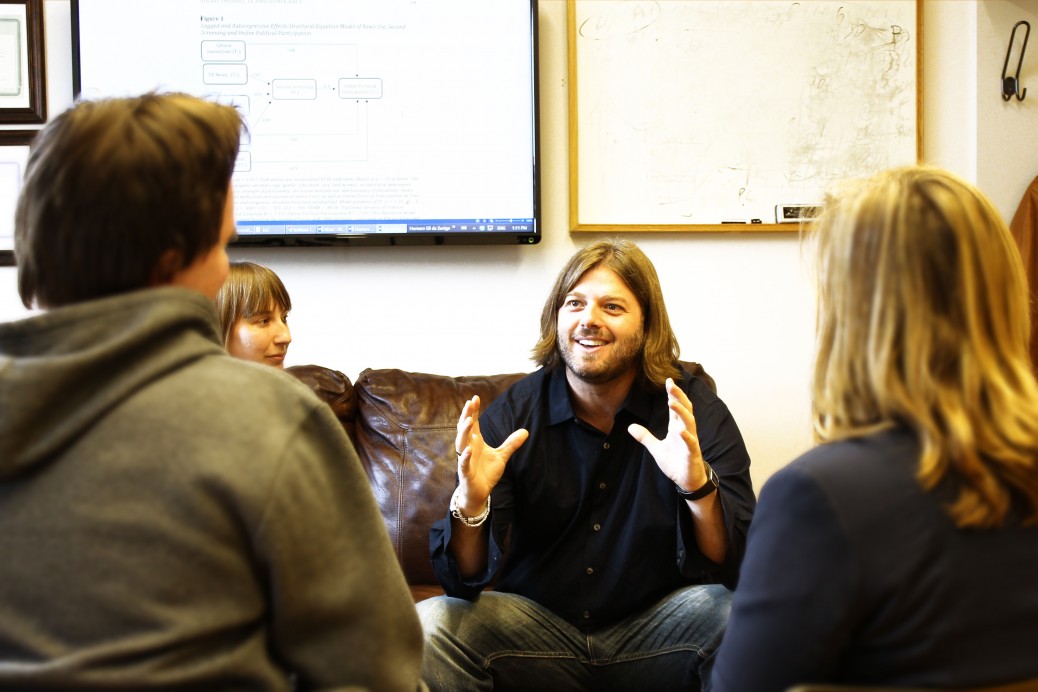University of Vienna MiLab: innovating media through academic research
This research-based unit examines the development of new media technologies and evolution of media innovation, while also analysing the impact new media has on the public and society.
Located in the capital of Austria, Media Innovation Lab of the University of Vienna researches new media technologies and their impact on the current media, society and users. The lab was created to analyse and examine the effects new tech on the public, and how technology can be studied at the intersection between society, psychology and politics.
“To MiLab, innovation represents a core basic part of journalism and civic society. Innovation goes hand-in-hand with the way citizens use media and may form an informed public opinion. Thus, innovation is inherent to change and progress,” says Dr Homero Gil de Zuñiga Navajas, Director of the Media Innovation Lab.
Methodology
MiLab publishes academic research papers across social sciences disciplines that investigates the impact of technologies, asking “what do people do with this, how it can change people’s lives. So we’re working a bit differently,” said Homero Gil de Zuñiga Navajas, director of the Media Innovations Lab.
The lab uses an interdisciplinary approach to conduct research and focus on survey data to generate information. The team, consisting of Homero Gil de Zuñiga Navajas together with two post-doctoral researchers and two doctoral students, examines the data to determine the impact of new technologies and media innovation on various aspects of society life.
The aim of the team is to influence industry, academia and policymakers in meeting the demands digital technology places on society.
Projects
MiLab’s work revolves around academic publications on research ranging from political communication to journalism, media innovation and many other themes.
“Rather than just innovating in the sense of ‘let’s generate a new app that we will use for this and that’, we are more interested in all disruptive changes that are taking place right now and how are those technologies affecting both journalism and society at large.”
MiLab’s outputs cover a multitude of themes, such as “Second Screening Politics in the Social Media Sphere: Advancing Research on Dual Screen Use in Political Communication”, published in the Journal of Broadcasting & Electronic Media, “Citizenship, Social Media and Big Data: Current and Future Research in the Social Sciences, published in the Social Science Computer Review.
Collaborations
MiLab maintains strong connections with other academic media innovation labs across the globe, often collaborating on research projects on various themes revolving media innovation and its impact on society.
Some of MiLab’s partners include Princeton University, Universidad Diego Portales (Chile), University of California (Santa Barbara), Universidad de Monterey (Mexico) and many others.
In addition, the Media Innovation Lab is currently working in partnership with Massey University in New Zealand on the World Digital Influence Project. Together with other researchers across the globe, the project focuses on the ways people are using technology, their level of engagement in politics and the characteristics of how they are approaching new information and the media in general.
“Connections usually come more from people, rather than just ‘We have to start with this lab, let’s seek out what other labs are out there and try to collect information’. They are connections that take place from collaborations that happened between people or interests, or you know them from conferences or you read their work and they read your work and eventually, some of these collaborations just take part.”
Future
With the digital world evolving rapidly around us, Gil de Zuñiga Navajas feels there are key elements that will influence society, and therefore his research.
“It is very likely the main area of progress relates to artificial intelligence. Self-learning machines will not only affect the way information is produced and disseminated, they will also affect the very understanding of what it is to be a functional citizen in modern society.”
In terms of projects, the Lab is currently bidding for another grant which will be used to fund research targeting mental reality. This is defined as the characteristics of information consumption using technological devices and the cognitive differences in terms of information recognition and memory recall.
“If the grant is successful we will be able to learn more about the influence of digital media, virtual reality and other new technologies in the field of journalism. We will also be able to learn more about how young people get civically socialized in the European Union. What is to be a good citizen to them? How to they engage in civic activities?”
The team will also continue their collaborative work with Massey University and the other global partners for the World Digital Influence Project, which will span out for the next three years and which will continue to inspect the public’s technology use and interaction with politics, information and media.
In addition, MiLab is looking at the possibility of expanding studies and conducting more experiments to compare two different methods of receiving news information: through mental reality versus through traditional ways (i.e. watching television).
CONTACT POINT

Dr Homero Gil de Zuñiga Navajas, Director of the Media Innovation Lab
Web: http://milab.univie.ac.at/
Twitter: @univienna

